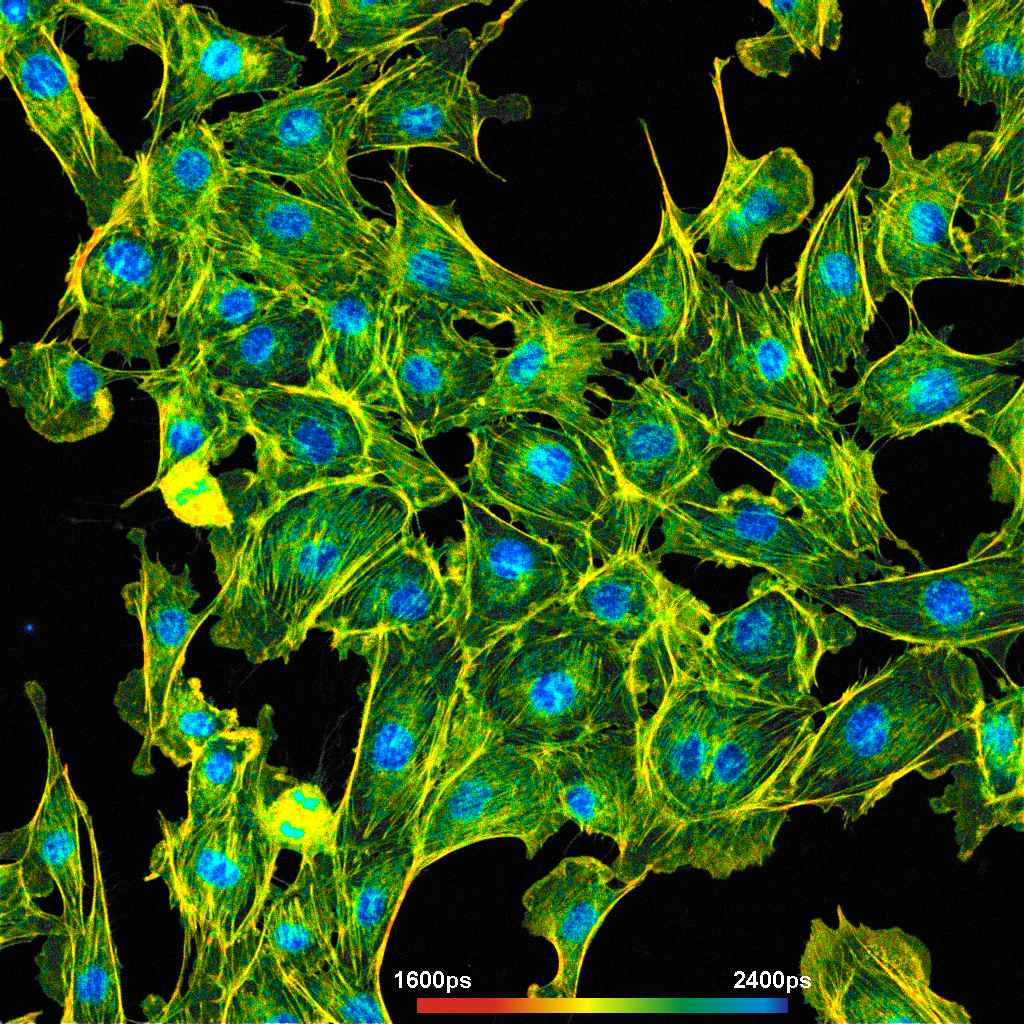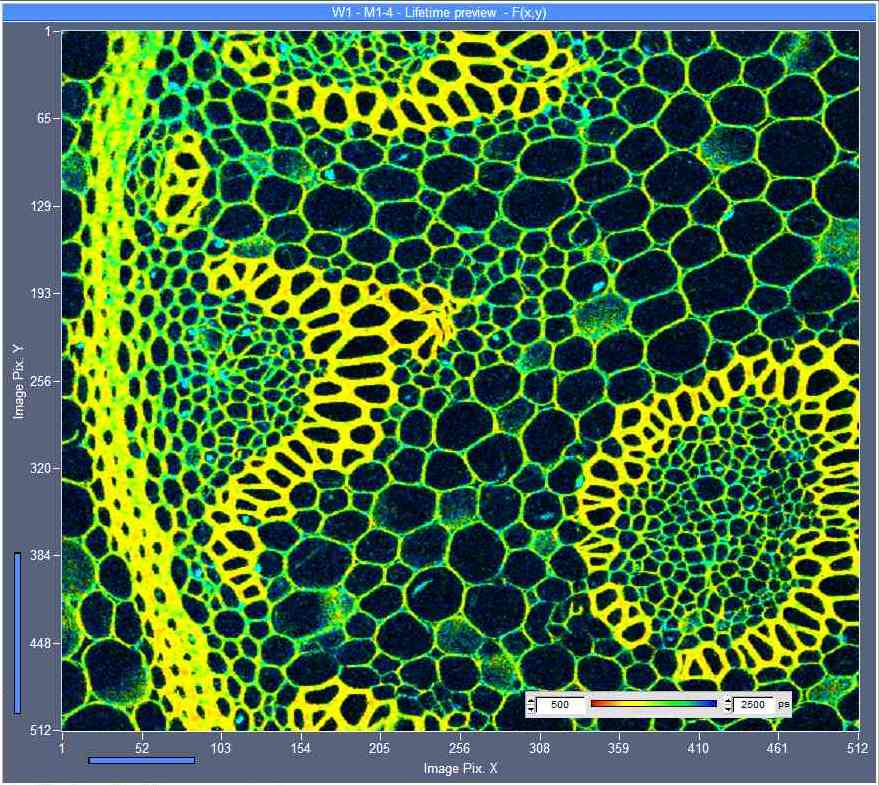We demonstrate the performance of the bh FASTAC (fast acquisition) FLIM system in combination with the Zeiss LSM 880 NLO multiphoton laser scanning microscopes. The FASTAC system uses a single fast hybrid detector the photon pulses of which are distributed into four parallel TCSPC FLIM channels, see bh news 2018/04. Because every new photon goes to the next TCSPC module the principle dramatically reduces counting loss and pile up effects. Images can be recorded at acquisition times down to the minimum frame times of the Zeiss LSM 880. Importantly, the system makes no compromises in terms of time resolution, time channel width, time channel number, or pixel number. The IRF width with fast detectors is less than 25 ps FWHM, and images are recorded with typically 1024 time channels per pixel. The time channel width can be made as small as 0.8 ps.
It should be noted that fast acquisition is only possible if the sample is able to feed the system with a sufficiently high photon rate. This is the case for samples that contain high amounts of bright fluorophores. It may not always be the case in molecular imaging experiments, metabolic FLIM, FRET experiments, or other applications where the fluorophores are linked to highly specific targets within the cells. It is an advantage of the FASTAC system that it even under such sample-limited conditions the results are at least as good as with the standard bh FLIM systems.
Application note: Fast-Acquisition Multiphoton FLIM with the Zeiss LSM 880 NLO


